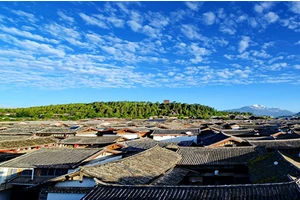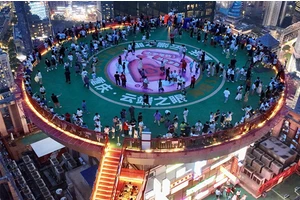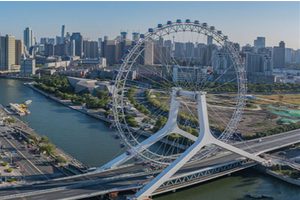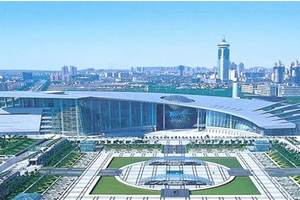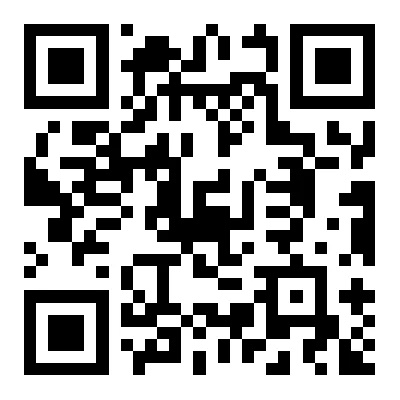How much does it cost to travel to Japan
Japan is a country full of dreamy elements, with a very long history and cultural heritage. Because of its historical relationship with China, you can see many elements of Chinese civilization. Here is a list of travel expenses to Japan.
Japan plan (apply for a visa at least 25 days in advance)
Time: March to May is tentatively scheduled for about seven days, tentatively scheduled for one day in Tokyo, two days in Osaka, three days in Kyoto and two days in Nara.
1. Watermelon card
2. Dharma Card (bought by Taobao in 56 yuan)
3. booking a B&B.
4、Google Map
5, the visa is generally 500 to 800.
Tourist attractions: Tokyo: Tokyo Tower, Ginza, Sensoji Temple,
Tokyo Sky Tower, Shinjuku, Akihabara
Osaka: Osaka Castle, Osaka Castle Park, Red Ferris Wheel, New Mei Tian Esophagus Street, Universal Studios,
Kyoto: Ping 'an Shrine, Kiyomizu Temple in Kyoto, Kyoto Tower, Kinkaku Temple in Kyoto, Lanshan, Yasaka Shrine in Kyoto, Gion in Kyoto (geisha performance), Gaotai Temple in Kyoto, Nijo Castle, Sansanbanerban, and Tianlong Temple in Kyoto.
Nara: Jin Feng Mountain Temple, Nara Town, Toda Temple, Nara Park (Deer Cake), Hasega Temple.
Gourmet: Tokyo: Ueno buckwheat noodles, Jing Quan shop, Hoppytong (izakaya), Liugexian, buckwheat noodle specialty store KAMIMURA, TAIKO teahouse (sashimi), Ohroji, Moomin Bakery Cafe (coffee).
Rotary sushi, Osaka Roast, string+udon noodles, Yilan Lamian Noodles, octopus balls,
Air ticket: about 1500 yuan.
Accommodation: about 1200.
Eating: About 2000.
Admission: about 13,000 yen
Sky Tower 3090 yen, free in Sensoji Temple.
Osaka Castle: Tianshouge is 600 yen, Osaka Castle Park is free, Red Ferris Wheel is 600 yen, and Universal Studios is 7400 yen.
Kyoto: Tickets for Ping 'an Shrine are 600 yen, for Kiyomizu Temple in Kyoto is 400 yen, for Kyoto Tower is 770 yen, for Jingu Temple in Kyoto is 400 yen, for Lanshan is free, for Yasaka Shrine in Kyoto is free, for Gaotai Temple is 600 yen and for Nijo Castle is 600 yen.
Nara: Jin Feng Mountain Temple is 500 yen, Nara Town is free, Todaiji Temple is 600 yen, and Nara Park is free.
If the topic says that a person's budget for a two-week trip to Japan is only 10 thousand yuan, it can't be said that it is not enough. It can only be said that he played reluctantly and couldn't go to many places. We can start from the basic aspects of eating, drinking, living, playing and buying-
Eating is actually very convenient or simple, such as convenience stores, noodle shops and simple restaurants in the streets, and good restaurants in traditional handmade sushi shops are more expensive, which can save a lot of places, provided that you don't go to some remote towns in small cities in pursuit of Japanese folk culture.
Then there is accommodation. One can make do with 10,000 yuan. If you want to stay for so many days, you must plan and communicate well and book your accommodation in advance. Whether you book a youth hostel, it is best to do what you can, not to ask too much, but to be simple, hygienic and safe. Of course, if the budget of 10 thousand yuan does not include accommodation, just play casually.
Secondly, travel, transportation costs can never be saved, and expensive. Subway and light rail are the best choice if you only travel in one city for two weeks, but train tickets are not cheap if you want to cross cities and provinces.
It is also ok to play and buy things, go to some free scenic spots and feel the Japanese cultural customs. There is no need to chase hot spots. After all, consumption should be considered. Buying souvenirs also depends on the budget. For example, most of the memorial guards in Sensoji Temple are bought by sightseeing groups, and it's nothing to buy a few tens of dollars each, because I have also bought them.
For example, once I traveled in Japan for 15 days and spent a total of 12,000 yuan (including round-trip air tickets). The route was: Beijing-Yokosuga-Kamakura-Tokyo-Nagoya-Kyoto-Nara-Shinomiya-Osaka-Kobe-Okayama-Hiroshima-Nagato-Shimonoseki-sasebo-Nagasaki-Kagoshima.
After my trip, I wrote seven travel notes. If you need to refer to them, here they are:
In fact, every time I come back from playing, people always wonder why I can keep my expenses within a certain range. For one thing, I usually choose to travel in the off-season. The second reason is that as long as there is public transportation, never take a taxi (in more than one country, it is found that compatriots prefer chartered travel). The third reason is that I have little interest in food, so I spend less on food and beverage. In fact, food in many tourist areas is more expensive, such as Huaishi cuisine in Kyoto.
Attachment: composition of expenses. The air ticket is 3,000 yuan (fortunately, it was promoted by Air China in the off-season), the visa is 120 yuan, the JR bus card is 2,600 yuan, the accommodation is about 4,000 yuan, the catering is about 2,000 yuan, and the ticket is about 300 yuan. As for shopping, I was forced to buy a Canon card machine (PC2050) because the camera broke down the next day. I forgot the price, which may be between 1,500 and 2,000 yuan. In addition, I bought some small souvenirs, which are very cheap things, such as gadgets sold in the shrine. On the last day, I used the remaining yen to buy some snacks.
One more item is added: In June 2018, three people will travel to Japan for 14 days, and the route is: Beijing-Tokyo-Fuji Five Lakes-Shizuoka-Hamamatsu-Nagoya (including Keshan-Nakatsugawa)-Sendai (by boat)-Aizu Ruosong-Nikko-Kamakura-Yokohama-Beijing, with a total cost of 8,500 yuan per capita. The so-called total cost refers to the period from leaving the house to entering the house.
Japan is our eastern neighbor, with a very long history and cultural heritage. It is also a country deeply influenced by Chinese civilization. Japan is very developed in modern times, with world-class science and technology and economy. At present, it is also a super-class tourism industry power. So how much does it cost to travel to Japan according to objective factors such as Japanese consumption?
1. Transportation consumption
In order to save money on air tickets, low-cost airlines such as Spring and Autumn, Auspicious, Jetstar and Peach are standard, and the lowest 1000 yuan RMB can fly to Japan. If you want to sit comfortably and control the cost, you can pay attention to ANA's special activities of releasing tickets for half a year to one year, and sometimes you can get good tickets for less than 3,000 yuan.
In Japan, it is suggested to buy The Japan Rail Pass in China in advance. The 7-day pass is 29,110 yen for adults and 14,550 yen for children. You can take trams and most Shinkansen trains unlimited times in one week, which is much more cost-effective than buying tickets separately.
2. Accommodation consumption
Ordinary homestays and small hotels generally cost 4,000-9,000 yen per night, and double rooms in business hotels (Tokyo Inn, Route Inn, etc.) cost 7,000-10,000 yen per night. Hotel chains such as APA and MyStays usually cost 15,000-20,000 yen per night.
The most distinctive accommodation in Japan is the capsule hotel. The world's first capsule hotel was born in Osaka. Although the comfort is not as high as that of a hotel, the price is very cheap. As long as it is 2000-3000 yen/night, you can experience it if the space is not too narrow.
3. Food and beverage expenses
There are many cheap restaurants on the streets of Japan, such as Sukiya, Matsuya Matsuya and Yoshinoya, which are familiar to Chinese people. A bowl of beef brisket costs about 200 yen, while the set meal costs 500-750 yen, which is very affordable.
If you want to eat some dishes with more Japanese family flavor and not too expensive, you can go to big house, Yayoi Xuan and other ordering restaurants, a Japanese main course, a bowl of miso soup, a pickled vegetable, and sometimes a salad. The price ranges from 500 yen to 1,000 yen.
4. Tickets for scenic spots
Parks and temples in Japan are usually free, and permanent exhibitions in museums are mostly free, and special exhibitions are generally 1,000-2,000 yen. Outdoor hiking and city walking don't cost a penny, and you can also participate in local festivals (Sakura Festival, Aboyong, Academy Festival, etc.) for free.
For those scenic spots that need to spend money, you can buy a combination ticket. Many urban areas and towns will launch a combination ticket for popular scenic spots in order to develop tourism, which is generally 2,000-3,000 yen and can be purchased at tourist centers in various places.
In this way, a week in Japan will cost at least 90,000 yen, or 5,500 yuan (including air tickets).


